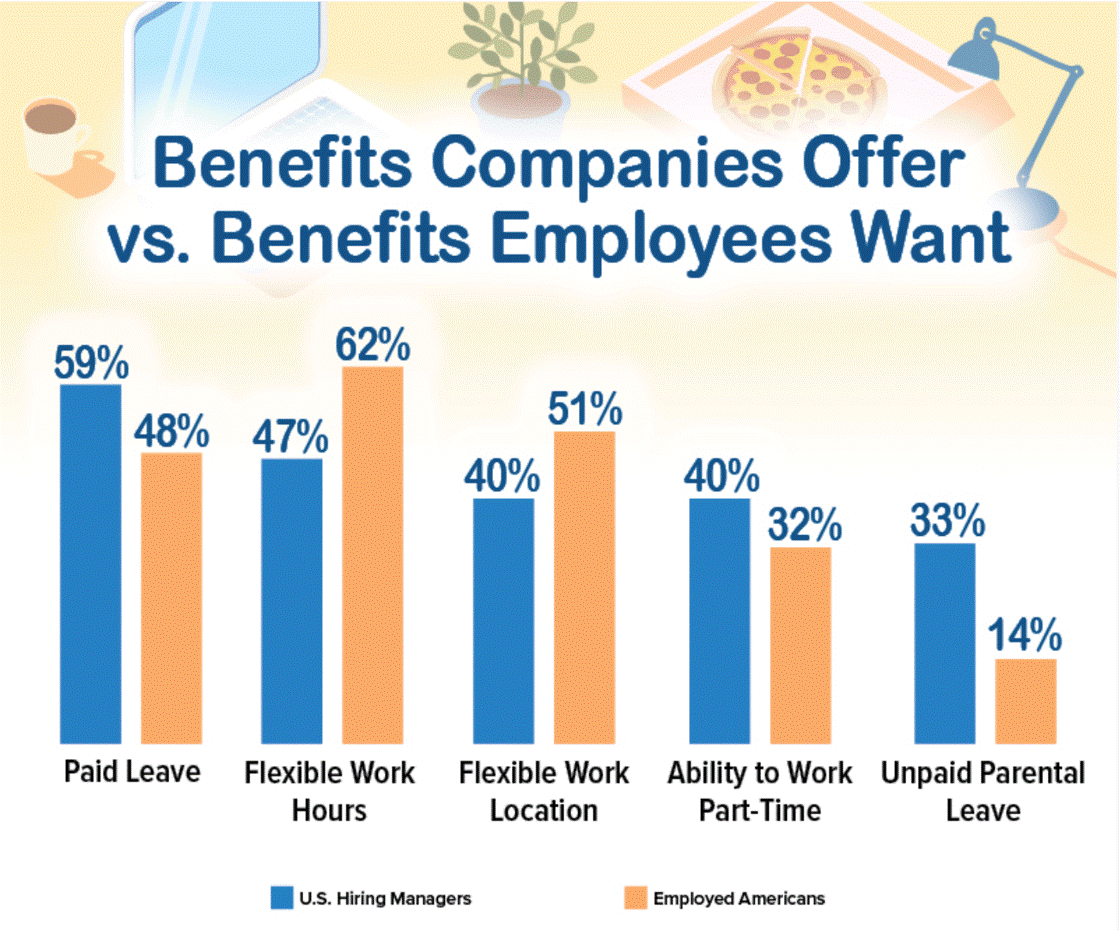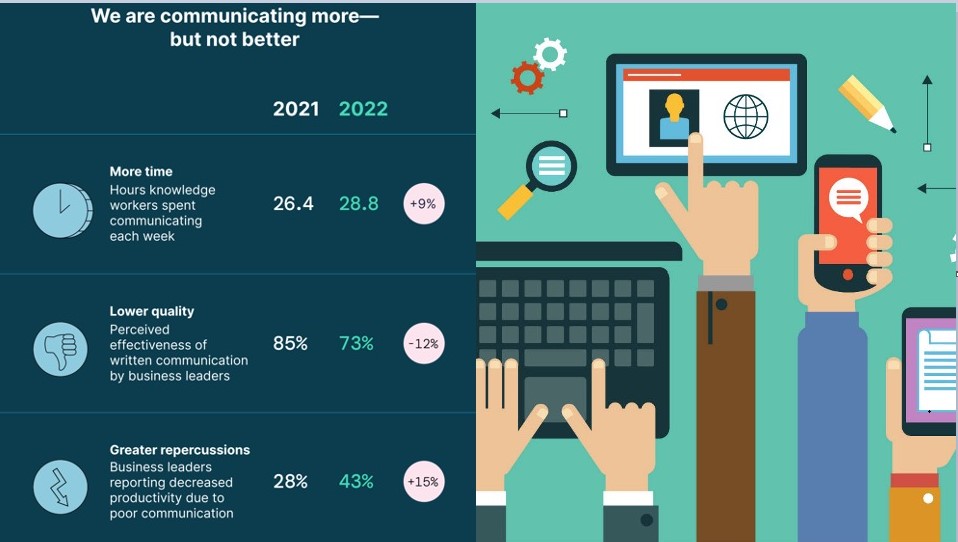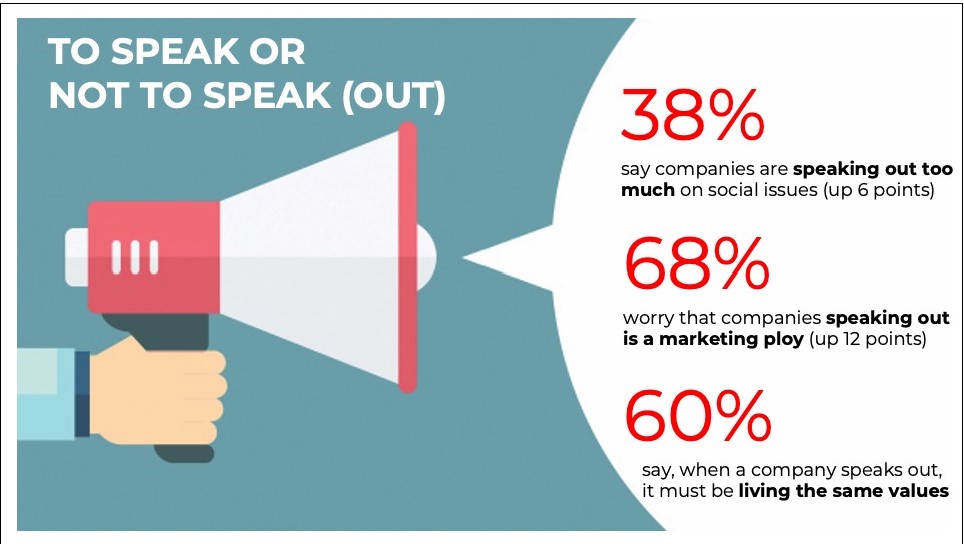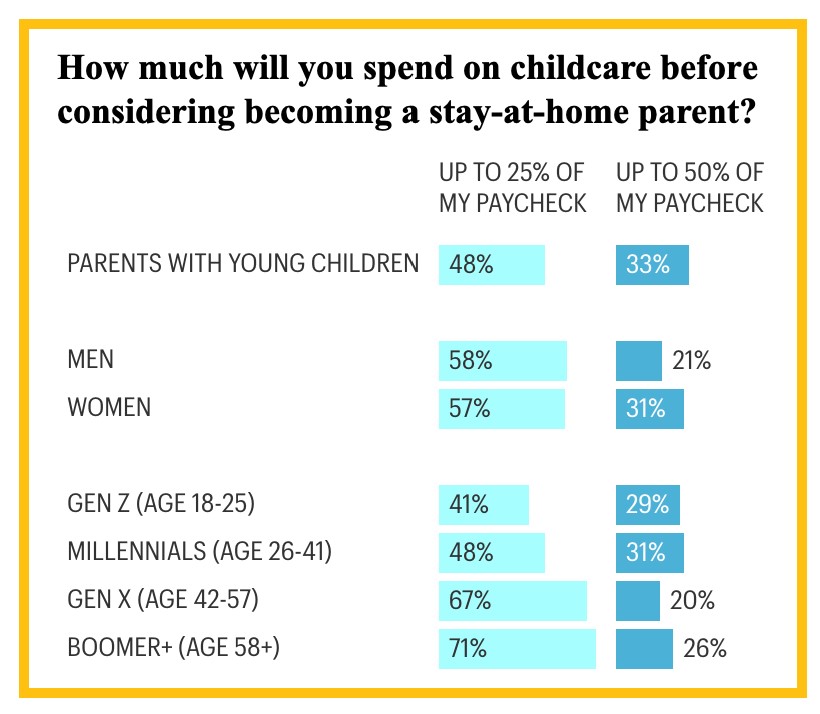Stagwell’s Annual Competition Acts as Incubator for Tech-Focused Marketing Startups with $1M in Funding to Start
NEW YORK and LONDON, April 11, 2023 /PRNewswire/ — Stagwell (NASDAQ: STGW) Marketing Cloud has announced the winner of its 2022 Innovation Competition, a program designed to unleash employee innovation and fund technology that solves the modern marketer’s pain points. SmartAssets is an AI-powered SaaS platform that uses AI to extract creative components from ads. It then uses performance data from those ads to guide and support the creative process by reporting, forecasting, and optimizing ads for effectiveness. With AI-powered asset categorization, performance analytics, and instant creative adjustments, brands can better optimize production timelines and overall media performance.
“We were inspired once again by the visionary ideas that were presented in this year’s internal ‘Shark Tank,’ where the competition was fiercer than ever,” said Stagwell Chairman and CEO Mark Penn. “The potential and capabilities of SmartAssets perfectly align with the needs of modern marketers – bringing data-driven decision making to the creative process – and we’re excited to leverage the Stagwell ecosystem to perfect the platform, bring it to market and let it go to work.”
SmartAssets was developed by a team from multilingual content and media consultancy Locaria, part of Stagwell’s Brand Performance Network: Chief Operating Officer Lindsay Hong, Data Scientist Eric Walzthöny, and Innovation Lead Vitaly Boitelet. The platform has three core capabilities:
- AI-powered asset management: SmartAssets reads the full content of a brand’s creative library and categorizes its attributes. It ensures assets meet industry and brand standards.
- Performance analytics: By connecting with a brand’s advertising platforms, SmartAssets provides performance reporting data not only to the creatives, but to media teams.
- Instant creative adjustments: After identifying opportunities, SmartAssets lets users quickly act on them by adjusting creative within the platform instantaneously.
“Global brands know that great creative drives performance just as much as a smart media strategy, and are looking for greater understanding and control of their increasingly complex creative asset portfolio. They want to be sure that the assets they produce not only meet quality and branding guidelines but will also land with the intended audience and drive results,” said Lindsay Hong, COO, Locaria. “By leveraging AI and the existing media infrastructure of the Brand Performance Network, SmartAssets will derive insights at scale to inform the creative process and expedite media strategy activation, allowing brands and agencies to unite their creative and media teams around one goal.”
Stagwell Marketing Cloud’s Innovation Competition provides funds and expertise for Stagwell’s 13,000+ employees to develop transformational ideas for technology-driven marketing solutions. The brief is simple: create a concept for a client-facing product at the intersection of technology, marketing, and business transformation.
“Our annual innovation competition, which we colloquially refer to as ‘Shark Tank,’ taps into the network’s global, cross-functional talent and deep understanding of the modern marketer,” said Stagwell Marketing Cloud Chief Marketing Officer Elspeth Rollert. “We pair that industry knowledge with the vast technical resources we have at Stagwell to build SaaS solutions that solve some of the industry’s biggest pain points.”
Past winners of the Stagwell Marketing Cloud Innovation Competition have developed into successful products, including:
- Harris Brand Platform (2018 Winner), an industry-leading brand management software tool that collects critical brand and marketing data on brand competitors and consumers, to help marketers segment, target, measure and optimize campaign effectiveness.
- PRophet (2019 Winner), the only generative and predictive A.I-driven PR tool that helps professionals draft releases and social content in minutes. PRophet was recently named the winner of the Innovation SABRE Awards North America 2023 in the PR Software and Services category.
- ARound (2020 Winner), a first-of-its-kind fan engagement platform that delivers stadium-level augmented reality experiences, in use by the MLB, NFL, and launching soon in the NBA.
- WonderCave (2021 Winner), a peer-to-peer texting solution helping to grow brands and build communities with 1:1 text conversations at scale. WonderCave was crowned the 2022 Campaign Tech Award Winner for Best Texting Platform.
About Stagwell Marketing Cloud
Stagwell Marketing Cloud (SMC) is a suite of data-driven SaaS solutions built for the modern in-house marketer. Born out of Stagwell’s network of award-winning marketing agencies, SMC’s technology empowers marketers to drive business impact by giving them intuitive tools equipped with proprietary, actionable data. SMC’s portfolio of solutions powers strategic customer research, communications, and media activation for brands worldwide by leveraging technology such as generative artificial intelligence, shared augmented reality, and more. Get your head in the cloud at www.stagwellmarketingcloud.com.
About Stagwell
Stagwell is the challenger holding company built to transform marketing. We deliver scaled creative performance for the world’s most ambitious brands, connecting culture-moving creativity with leading-edge technology to harmonize the art and science of marketing. Led by entrepreneurs, our 13,000+ specialists in 34+ countries are unified under a single purpose: to drive effectiveness and improve business results for their clients. Join us at www.stagwellglobal.com.
Media Contact
Sarah Arvizo
pr@stagwellglobal.com
Related
Articles
In the News, Press Releases, Talent & Awards
Mar 12, 2025
GALE Wins Ad Age Business Transformation Agency of the Year and Adweek U.S. Media Agency of the Year

In the News, Press Releases, Talent & Awards
Mar 10, 2025
Four Stagwell (STGW) Agencies – 72andSunny, Anomaly, Code and Theory and GALE – Awarded 2025 Ad Age Agency A-List Recognition for Business and Creative Transformation

In the News, Press Releases
Mar 07, 2025
Left Field Labs Celebrates 17 Years of Building What’s Next Amid Expanding Global Client Roster

Newsletter
Sign Up
CONTACT
hello@stagwellglobal.com
SIGN UP FOR OUR INSIGHTS BLASTS
Stagwell and our partners at Infinite Reality teamed up at SXSW 2023 to explore the ways that fandom, technology and consumers are converging in immersive experiences, helping bring consumers closer to the sports, entertainment, music and games they love. Hear from leaders at United Masters, Napster, AFROPUNK and more about how the consumer imperative for more immersive experiences are shaping early entertainment and commerce in the metaverse. Stream episodes from the SXSW 2023 Podcast Lounge below.
– Alexis Williams, Chief Brand Officer, NA

Talent in the Metaverse
What’s next in connection, community, and commerce for avatars, athletes and artists? Hear from Tracy Benson, CEO and Founder of Obsesh, Nova Han of Nova Han Productions, and Helix Wolfson, President of Metaverse Operations at Infinite Reality. Stream the episode.
Creator Economy and the Metaverse
How are creators and platforms envisioning the future of fandom and engagement in the metaverse and other immersive realities? Maggie Malek, CEO, MMI and John Rough, SVP, Enterprise for Untied Masters, discuss. Stream the episode.
Fandom, Music, and Metaverse
VentureBeat’s Dean Takahashi, Jonathan Vlassopulos, CEO of Napster, and Animal Concerts Executive Producer, Music, Anthony Mazzo discuss how brands can connect with artists, music, platforms and communities in the metaverse. Stream the episode.
Inclusivity in the Metaverse
AFROPUNK founder Jocelyn Cooper and Shelby Larkin, Director, Global Partnership development at SoFi Stadium and Hollywood Park discuss diverse communities can benefit from the Metaverse. Stream the episode.
Related
Articles
In the News, Marketing Frontiers, Press Releases, Stagwell Marketing Cloud
Apr 02, 2025
The European Commission Expands its Partnership with UNICEPTA by PRophet to Include Media Analysis

Artificial Intelligence, In the News, Marketing Frontiers, Press Releases
Apr 02, 2025
Stagwell (STGW) Appoints John Kahan as Inaugural Chief AI Officer

In the News, Investments & Financials, Press Releases
Apr 02, 2025
Stagwell (STGW) Will Host 2025 Virtual Investor Day and Announce $5 Billion Revenue Target by End of FY29

Newsletter
Sign Up
By: Ray Day
CONTACT:
We wanted to share our latest consumer and business insights, based on research from Stagwell. Among the highlights of our weekly consumer sentiment tracking (fielded Mar. 24-26):
WORRIES ABOUT ECONOMY DECLINE
Today, 83% of Americans are concerned about the economy and inflation – down 2 points from last week and back near December’s 82% rate.
- 79% worry about a potential U.S. recession (no change)
- 78% about U.S. crime rates (down 3 points)
- 73% about political divisiveness (up 1 point)
- 71% about the War on Ukraine (down 1 point)
- 68% about affording their living expenses (down 2 points)
- 67% about a banking crisis (new)
- 66% about the solvency of U.S. banks (new)
- 59% about the security of deposits in banks (new)
- 55% about a new COVID-19 variant (down 3 points)
- 46% about losing their jobs (down 7 points)
INFLATION STILL TOP CONCERN; BANKING CRISIS IS NOT
While Americans remain concerned about inflation, they’re not worried about the recent banking crisis and are divided on the TikTok debate. That’s according to our latest poll with the Center for American Political Studies at Harvard University.
- 67% agree with the Biden administration’s decision to step in and guarantee all customer deposits from Silicon Valley Bank and other failed banks.
- 77% of voters think the government should fully insure deposits at all U.S. banks, not just systematically important firms.
- 71% think the bank failures will affect them “not at all” or “only a little bit.”
- 67% think the deposits in their own banks are safe.
- Americans care more about inflation than the banking crisis: 54% believe the Federal Reserve should prioritize fighting inflation even if it means allowing banks to fail and could lead to a financial crisis in the short term.
- 75% see China as an enemy of the U.S., and 80% think China seeks to replace the U.S. as the key player in global affairs.
- 55% of voters think Biden’s foreign policy is too weak on China.
- At the same time, 75% are split on how to handle TikTok: 45% support a ban in the U.S., while 46% support allowing the app with conditions, such as forcing it to undergo regular security reviews or forcing its Chinese owners to sell their stakes.
MANY AMERICANS STILL FEEL ‘WEALTHY’
Even as the average American household has seen purchasing power and wealth erode, many are still feeling at least somewhat “wealthy,” according to our poll with Fast Company.
- 68% of Americans define wealth as comfort and necessities, as opposed to extravagance and excess.
- 48% say wealth is the ability to comfortably afford necessities like food and shelter with some money left over.
- 20% indicate that being able to afford necessities alone defines wealth.
- 11% define wealth as being able to afford “extravagant purchases.”
40% WORRY AI WILL TAKE THEIR JOB
Generative AI continues to be the headline of 2023 – including in the work place – with 74% of Americans having used the technology for work-related tasks yet 40% worried that the technology is going to replace them.
- The C-suite debate about ChatGPT is intense, with 56% of workers reporting their companies already have implemented discussions or restrictions about using ChatGPT.
- 38% say that the technology will make them more useful in the workplace.
- 42%, however, believe the new tool will make it harder for them to find a new job – with more than 7 in 10 believing AI will replace roles with a heavy focus on data entry and processing, media and communications, coding and even hiring. Roles expected to be replaced the most: data analysis (77%), data entry and processing (75%), media and communication (74%), content creation (73%), PR (72%), coding (71%), customer service (71%), administrative roles (71%) and hiring (71%).
1 IN 2 CAREGIVERS SUFFERING MENTALLY, FINANCIALLY
Caregivers today need support just as much as those they care for, according to our survey with CVS Health.
- 28% of Americans consider themselves to be caregivers – yet 41% say they never wanted to be a caregiver.
- 22% are not compensated for their time, with most taking care of children under the age of 18 (40%), aging parents (35%) or caring for a partner or spouse (21%).
- 47% said that being a caregiver is a financial burden, and 49% report their mental health suffers.
- 37% said they’ve had to quit their job or cut back on work hours due to caregiving responsibilities – especially younger caregivers (57% for Gen Z and young Millennials).
- Caregivers also are making sacrifices in their personal lives: 45% have spent less time participating in their hobbies, have seen their friends less (39%), are falling behind on managing their health (34%), rearranged their home to accommodate people they care for (29%) and have formed unhealthy lifestyle habits (28%).
ICYMI
In case you missed it, check out some of the thought-leadership and happenings around Stagwell making news:
- Physical and mental health, DEI and workplace flexibility revealed as top employee priorities
- Americans don’t assume moms will stay home with their kids, but the gender pay gap, motherhood penalty, and childcare crisis makes it hard for them to keep working
- 27% of Americans think texting while driving is socially acceptable
- Athletes Maria Sharapova, Allyson Felix and Spencer Dinwiddie Join Stagwell, United Airlines, Diageo, Penske Media Corporation and Axios at Cannes Lions 2023
Related
Articles
In the News, Press Releases, Talent & Awards
Mar 12, 2025
GALE Wins Ad Age Business Transformation Agency of the Year and Adweek U.S. Media Agency of the Year

In the News, Press Releases, Talent & Awards
Mar 10, 2025
Four Stagwell (STGW) Agencies – 72andSunny, Anomaly, Code and Theory and GALE – Awarded 2025 Ad Age Agency A-List Recognition for Business and Creative Transformation

In the News, Press Releases
Mar 07, 2025
Left Field Labs Celebrates 17 Years of Building What’s Next Amid Expanding Global Client Roster

Newsletter
Sign Up
By: Ray Day
CONTACT:
We wanted to share our latest consumer and business insights, based on research from Stagwell. Among the highlights of our weekly consumer sentiment tracking (fielded Mar. 17-19):
WORRIES ABOUT ECONOMY STEADY
Today, 85% of Americans are concerned about the economy and inflation – steady with last week and up from 82% rate in December.
- 81% worry about U.S. crime rates (up 1 point)
- 79% about a potential U.S. recession (down 1 point)
- 72% about the War on Ukraine (up 3 points)
- 72% about political divisiveness (down 2 points)
- 70% about affording their living expenses (no change)
- 58% about a new COVID-19 variant (up 3 points)
- 53% about losing their jobs (up 7 points)
62% OF EMPLOYEES WANT FLEXIBLE WORK HOURS; 47% OF COMPANIES OFFER THEM
Flexibility remains king for non-traditional benefits workers feel companies should offer, yet less than half of businesses do so. This is according to our survey with Express Employment Professionals.
- From an employee perspective, it is important that a company offers flexible work hours (62%), flexible work locations (51%), paid leave (48%) and shortened work weeks (36%).
- Yet less than half of hiring decision-makers report their companies do so: 47% say they offer flexible work hours, 40% flexible work locations, 48% paid leave and 23% shortened work weeks.
- Regarding traditional benefits, 54% of U.S. hiring managers say offerings will remain the same as they were in 2022, and 37% expect traditional benefits will increase this year – a significant drop since the first half of 2022, when 50% were talking about traditional benefit increases.
WOMEN KEEP CANNABIS USE QUIET
Many American women are using cannabis but are keeping it quiet, according to our survey with MedMen.
- 37% of American women 21+ use cannabis regularly, with 28% using it at least once a month.
- Younger women are more than twice as likely to use cannabis (ages 21-44: 57%) than older women (ages 45+: 22%).
- Women say they primarily use cannabis for therapeutic reasons, such as relieving anxiety (60%), helping to sleep (58%) and relieving pain (53%).
- Nearly two thirds of women who use cannabis (65%) say there are people in their life who still do not know, including their parents (26%), children (22%) and coworkers (21%).
WOMEN ALSO DEMAND MORE RESPECT
Women believe society expects too much from them and does not respect them enough, according to further insights from our State of Women Report 2023 with theSkimm.
- Released during Women’s History Month, the report investigates and surfaces how women see the work they do, both in their careers and in the home, and how society perceives that work.
- 74% say that “society treats women like second-class citizens” and the “deck is stacked against women.”
- 79% say “I am concerned with the social expectations around unpaid labor/mental load that women are responsible for.”
- 65% say “new legislation and policies that are being passed do not advance women’s rights.”
- 89% are planning to redesign their lives the way they want to.
- 87% have or want to create more sources of financial stability, with 60% adding a side hustle, shifting to a higher-earning career or advocating for a promotion.
- 65% (74% among Black women) have become involved, or plan to, in national politics.
ICYMI
In case you missed it, check out some of the thought-leadership and happenings around Stagwell making news:
- Americans want weight loss drugs like Ozempic to be covered by insurance. Most of the time, they aren’t.
- More Than 1 in 5 U.S. Adults Have Considered Leaving Their Job In the Last Year to be Self-Employed
- More American women are single than ever before—and it’s costing them big money
- What’s on the Easter table and in the basket? Instacart reveals the most popular ‘eats and treats’
Related
Articles
In the News, Press Releases, Talent & Awards
Mar 12, 2025
GALE Wins Ad Age Business Transformation Agency of the Year and Adweek U.S. Media Agency of the Year

In the News, Press Releases, Talent & Awards
Mar 10, 2025
Four Stagwell (STGW) Agencies – 72andSunny, Anomaly, Code and Theory and GALE – Awarded 2025 Ad Age Agency A-List Recognition for Business and Creative Transformation

In the News, Press Releases
Mar 07, 2025
Left Field Labs Celebrates 17 Years of Building What’s Next Amid Expanding Global Client Roster

Newsletter
Sign Up
By: Ray Day
CONTACT:
We wanted to share our latest consumer and business insights, based on research from Stagwell. Among the highlights of our weekly consumer sentiment tracking:
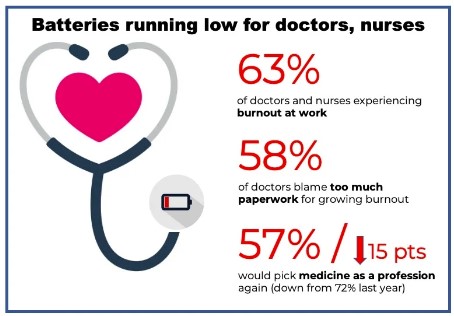
WORRIES ABOUT ECONOMY DECLINE AGAIN:
Today, 85% of Americans are concerned about the economy and inflation – down 2 points from last week and up from 82% in December.
- 82% worry about U.S. crime rates (up 2 points)
- 81% a potential U.S. recession (up 1 point)
- 73% political divisiveness (no change)
- 72% the War on Ukraine (no change)
- 69% affording their living expenses (up 1 point)
- 55% a new COVID-19 variant (no change)
- 43% about losing their jobs (down 3 points)
AI-GENERATED BUZZ: WHAT DO CONSUMERS THINK?:
With all the buzz about generative AI, AI-powered search engines and ChatGPT, what do consumers have to say? Stagwell’s National Research Group took the pulse of public opinion in a new report.
- 17% of those surveyed said they had heard a “great deal” about AI-powered search recently, and 53% had heard at least “some.”
- 92% of consumers who have heard about AI-powered search say they think it will change the way people use the internet.
- 71% say they’re excited about using the technology.
- 59% of those who have heard about AI-powered search say Google is best positioned to successfully deliver the technology to market versus 13% who would vote for Microsoft.
- Also see Stagwell’s whitepaper: “Can Picasso Live in the Machine? AI get smart: What to know, what to watch and what to play with”
BREAKING UP IS HARD TO DO SECURELY:
Our latest survey with Norton finds many Americans – especially younger ones – are reckless online after breakups, including sharing passwords with their exes and not treating online stalking with concern.
- 25% of Americans admitted to being the victim of an online dating or romance scam.
- Gen Z (34%) and Millennials (35%) have “concerningly relaxed” attitudes about online stalking. One third say they don’t care if they’re being stalked online by a current or former partner as long as they’re not tracked in person – three times higher than older adults (10%).
- More than a third of Gen Z say they have shared passwords with an ex.
- Among those who have been in romantic relationships, 16% say that they’ve checked a current or former significant other’s phone to view texts, calls, direct messages, emails or photos, 12% have reviewed their former partner’s device search history, and 11% have tracked a current or former partner’s location using a location sharing app.
THE DOCTOR IS IN BUT BURNED OUT:
America’s healthcare workforce is under unprecedented strain, and doctors and nurses are burning out in record numbers, according to our survey with HealthDay.
- 63% of doctors and nurses said they are experiencing a moderate or great deal of burnout at work.
- 66% of physicians and 75% of nurses cite understaffing as the most significant contributor to burnout, along with a growing amount of daily paperwork (58% for physicians and 51% for nurses).
- Many also cite time communicating with insurance companies on their patients’ behalf as a source of burnout (38% for primary care physicians and 20% for nurses).
- All of this is leading to decreased satisfaction among medical professionals. A year ago, 40% of physicians felt highly satisfied. Today, it’s 22%.
- As a result, only 57% of doctors say they would choose medicine as a profession again, compared with 72% last year.
RECENT HOME SELLERS REVEAL LESSONS LEARNED:
An overwhelming share (84%) of Americans who sold a home for the first time in the past two years wish they had done something differently, according to our survey with Zillow.
- Regret #1: The most common thing recent first-time home sellers wish they had done differently is set a higher list price (39%). In January, nearly one in four listings had a price cut (22%), which is 10 percentage points higher than last winter. 75% of agents say pricing is the most important thing sellers need to get right in a less frenzied housing market.
- Regret #2: 87% of recent first-time sellers think something they could have done would have attracted a higher sale price. 39% say better listing photos could have boosted their bottom line, while 25% say a virtual tour could have helped sell their home for more. Fact: Listings that include a 3D home virtual tour or an interactive floor plan receive 69% more page views and 80% more saves.
- Regret #3: 25% of recent first-time sellers wish they had listed their home at a different time. If the owner has flexibility, the second half of April is the optimal time to list a home for sale nationwide.
- Regret #4: 25% of recent first-time sellers say they could have received a higher sale price if they had invested in more home improvements and repairs. Landscaping, interior painting and carpet cleaning are the most commonly completed seller projects, as they send a signal to a buyer that a home is well-maintained.
ICYMI: In case you missed it, check out some of the thought-leadership and happenings around Stagwell making news:
Related
Articles
In the News, Press Releases, Talent & Awards
Mar 12, 2025
GALE Wins Ad Age Business Transformation Agency of the Year and Adweek U.S. Media Agency of the Year

In the News, Press Releases, Talent & Awards
Mar 10, 2025
Four Stagwell (STGW) Agencies – 72andSunny, Anomaly, Code and Theory and GALE – Awarded 2025 Ad Age Agency A-List Recognition for Business and Creative Transformation

In the News, Press Releases
Mar 07, 2025
Left Field Labs Celebrates 17 Years of Building What’s Next Amid Expanding Global Client Roster

Newsletter
Sign Up
By: Ray Day
CONTACT:
We wanted to share our latest consumer and business insights, based on research from Stagwell. Among the highlights of our weekly consumer sentiment tracking (fielded Feb. 17-19):
WORRIES ABOUT ECONOMY MODERATE:
Today, 87% of Americans are concerned about the economy and inflation – down 3 points from last week and up from 82% in December.
- 80% worry about U.S. crime rates (down 4 points)
- 80% about a potential U.S. recession (down 2 points)
- 73% about political divisiveness (down 2 points)
- 72% about the War on Ukraine (no change)
- 68% about affording their living expenses (down 7 points)
- 55% about a new COVID-19 variant (no change)
- 46% about losing their jobs (down 1 point)
WORK FROM HOME BUT INTERVIEW IRL
A recent Harris Poll found that 41% of Americans are likely to consider pursuing a new job within the next six months. In our latest survey with American Staffing Association, remote employees like working from home, yet they want to meet their new boss face-to-face first.
- 70% of job seekers say they want to interview in person for a new job rather than a video (17%) or phone call (9%).
- 67% say they feel the need to modify their usual appearances in some way before a job interview.
- Before an interview, more Black Americans feel the need to shave their facial hair (33% versus 22% for White Americans), while both Hispanic (19%) and Black Americans (17%) also feel the need to cover tattoos (White 10%) and remove facial piercings (18% for Hispanic, 14% for Black and 9% for White).
COMMUNICATING MORE BUT NOT BETTER:
Today’s hybrid workplace is a whirlwind of communication – with employees spending more than 70% of their work week communicating on various channels. That’s up from last year – yet poor communications also is causing a steep decline in productivity and effectiveness, according to our “State of Business Communication: The Path to Productivity, Performance, and Profit” report with Grammarly.
- Employees are spending 9% more time communicating – 28.8 hours a week – compared with last year.
- Leaders report a 12% drop in the effectiveness of written communication over the same period and a 15% decline in productivity.
- This is causing employee stress – with workers reporting a 7% increase in stress due to poor communications compared with a year ago.
- 84% of business leaders are feeling the downsides of poor communication, with lower productivity, missed deadlines and increased costs ranking as the top three.
- Most leaders (60%) and nearly half (45%) of workers say personal connections have suffered in the hybrid workplace.
- 68% of leaders say they lost at least $10,000 or more in business in the past year due to poor communications. One in five also say poor communications eroded their brand credibility or reputation.
DOCTORS DON’T HAVE TIME FOR YOUR DATA
As patient portals become more common and telehealth data pours in from apps and wearables, doctors have more data than time, according to our survey with ZS.
- 71% of primary care physicians say they have more data than they can handle.
- The patient data problem is compounded by the fact that 57% of doctors report that technology flaws are a barrier to having better-connected health care.
- 86% of primary care physicians say that a lack of reimbursement for connecting health care is a hurdle.
ICYMI:
In case you missed it, check out some of the thought-leadership and happenings around Stagwell making news:
- February Harvard CAPS-Harris Poll: Perception of economy is improving but only a third believe it is on the right track
- All Generations Find Telehealth Beneficial, New CVS Health Data Shows
- Almost Two-Thirds of U.S. Doctors, Nurses Feel Burnt Out at Work
- Streamer ads performed well during the Super Bowl
As always, if helpful, we would be happy to provide more info on any of these data or insights. Please do not hesitate to reach out.
Thank you.
Related
Articles
In the News, Press Releases, Talent & Awards
Mar 12, 2025
GALE Wins Ad Age Business Transformation Agency of the Year and Adweek U.S. Media Agency of the Year

In the News, Press Releases, Talent & Awards
Mar 10, 2025
Four Stagwell (STGW) Agencies – 72andSunny, Anomaly, Code and Theory and GALE – Awarded 2025 Ad Age Agency A-List Recognition for Business and Creative Transformation

In the News, Press Releases
Mar 07, 2025
Left Field Labs Celebrates 17 Years of Building What’s Next Amid Expanding Global Client Roster

Newsletter
Sign Up
By
National Research Group
CONTACT
nick.crofoot@nrgmr.com
SIGN UP FOR OUR INSIGHTS BLASTS
A new battlefront in the Tech Wars heated up last week with Microsoft’s announcement and hands-on demo of new AI capabilities in its Bing search engine and Edge browser. Google quickly followed suit by announcing its own conversational AI in a blog post on Monday and at an event in Paris later in the week. This all comes on the heels of ChatGPT’s launch late last year, which eclipsed 1M users in 5 days and 100M in less than two months.
With all the buzz, we wanted to take a pulse on public opinion and understanding of this emergent technology, so we surveyed 1,000 US Consumers on Tuesday this week. Here’s what we found…
NEWS STILL BREAKING THROUGH
While last week felt like a whirlwind of announcements and media coverage, it’s important to keep in mind that news about AI-powered search is only just beginning to break through to the masses. 17% of those we surveyed said they had heard a “great deal” about AI-powered search recently, and 53% had heard at least “some.” That’s not bad one week in, but there’s a long way to go before companies build mainstream familiarity and understanding of the technology.
DON’T COUNT GOOGLE OUT
Last week did not go as well as Google likely hoped with many headlines focusing on Bard’s inaccurate assertion that the Webb Space Telescope was the first to capture images of an exoplanet and a tepid media response to the event in Paris. But one week’s headlines will not determine the long-term trajectory of who wins the race.

SO WHO HAS THE EDGE?
Disruptor or incumbent? Microsoft certainly has taken the initiative, having released a functional product that is already available to beta testers (and a lengthy waitlist to gain access). They also plan on investing $10 billion into OpenAI. Google is the overwhelming incumbent in the search space, commands vast resources, and has assembled a formidable team that has been working on this technology for many years. The public appears to be favoring Google’s incumbency at this stage.
59% of those who have heard about AI-powered search say Google is best positioned to successfully deliver the technology to market …compared to 13% for Microsoft
Time will tell how much that shifts in the coming weeks and months as familiarity with the companies’ offerings deepens, and more users get their hands on the technology.
Looking forward, consumer excitement is palpable
A lot remains to be seen, but consumer excitement for the technology is building.
71% of those who have heard about AI-powered search say they’re excited about using the technology and 92% say they believe it will change the way people use the Internet. Why? Improved ease and speed of finding information and improved accuracy and relevance of search results are the key benefits driving their excitement.
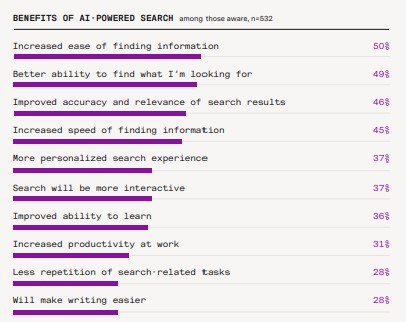
IMPLICATIONS
As we look ahead, a few thoughts on how this will play out from here…
Finding the Early Adopters
Which companies will effectively find the segments of the population that drive early adoption and help their products cross the chasm? Our data points to the usual suspects as early adopters: Younger consumers (ages 18-34) who skew male, those working full time (who perhaps see workrelated applications/benefits), and more affluent and educated consumers.
Managing Expectations
The potential for conversational AI is clear, but as we’ve already seen, it’s still a work in progress. The process of “deep reinforcement learning” that drives applications like ChatGPT will take time to mature and there will be missteps and inaccurate results in the interim. Continual improvements in accuracy while managing consumer expectations will be important to mass adoption.
Achieving Product-Market Fit
In addition to generating excitement and driving trial, products will need to identify the Jobs to Be Done that will have staying power. With seemingly limitless applications for AI-powered search, what jobs can the technology do for users that deliver the most real, sustained utility? Keying in on these use cases and building products that are optimized for these needs will be critical to gaining a competitive advantage.
Monetization
Even new technologies that find the early adopters and achieve productmarket fit aren’t guaranteed a sustainable path forward—think of AI-powered voice assistants, which have achieved widespread adoption, yet struggled mightily to monetize. How will companies effectively monetize conversational AI? Will they follow the ad-supported playbook that Google has mastered? What subscription- based models will emerge?
Bringing AI into the Light
Now that AI is maturing across a new threshold, and as ChatGPT, Bing and Bard bring multidimensional algorithms forward in a radically new way, there may be an opportunity to incorporate a new level of transparency, education, and understanding of all AI, including existing algorithms that are already deeply interwoven into daily life. This may happen organically, as new AI are introduced; perhaps there is also an opportunity to create distinct and meaningful AI personas for existing tools, with inherent consumer choice built into the experience.
Proceeding Responsibly
There’s been much written about the unintended consequences and potential abuses of AI. Ambiguous and misleading answers, the expression of embedded bias, and the propagation of ideological filter bubbles are all concerns. Conversational AI will almost certainly be a proving ground for the extensive work that Microsoft, Google, and others have put in to anticipate consequences and safeguard against abuses. Close partnership between companies, their users, third parties, and regulatory bodies to ensure a responsible approach will be essential to maximizing the potential benefits of this new technology.
Want to learn more?
Contact Nick.Crofoot@nrgmr.com
Related
Articles
In the News, Marketing Frontiers, Press Releases, Stagwell Marketing Cloud
Apr 02, 2025
The European Commission Expands its Partnership with UNICEPTA by PRophet to Include Media Analysis

Artificial Intelligence, In the News, Marketing Frontiers, Press Releases
Apr 02, 2025
Stagwell (STGW) Appoints John Kahan as Inaugural Chief AI Officer

In the News, Investments & Financials, Press Releases
Apr 02, 2025
Stagwell (STGW) Will Host 2025 Virtual Investor Day and Announce $5 Billion Revenue Target by End of FY29

Newsletter
Sign Up
Associate Strategy Director for Europe, Tim Hawes breaks down generative AI and gathers insights from teams at Assembly on ChatGPT and its applications.
Over the last two years, advancements in generative AI have been taking the world by storm, just check out some of the headlines:
Beethoven’s unfinished Tenth Symphony completed by artificial intelligence.
Why It’s So Hard to Resist Turning Your Selfies Into Lensa AI Art.
How a deepfake Tom Cruise on TikTok turned into a very real AI company.
ChatGPT passes exams from law and business schools.
Generative AI utilises machine learning to create new and unbelievably real digital content with minimal human intervention, leaving many questioning the ethical role this tech plays in our everyday lives. In practice, brands and marketers are assessing how these tools will impact their work and the future of their industries.
We spoke with some of the brilliant minds at Assembly to get their points of view and what they’re excited about when it comes to generative AI.
What can generative AI be used for, other than creating AI art of cats?
Tim Hawes, Associate Strategy Director for Europe: It has a tone of utility already and its rate of development is astounding. It seems like a new AI for “X” is released or posted every day. It can pretty much answer any question you throw at it (ChatGPT, that is). It’s like a chat-based Wikipedia in that regard. I’ve asked it to explain history, maths and random facts or even write some marketing headlines or code snippets. It can write recipes – which is what really kickstarted my renewed interest in it. I watched a video where a chef explains her preferences; type of meal and the bot outputs a full menu and instructions for a full Indian-inspired thanksgiving dinner.
Other than cats, it (DALL-E) can create some genuinely interesting art, some can come out looking a little uncanny valley-esque though, depending on what you ask it to generate. There are AIs for everything, theresanaiforthat.com is a database of many of them; I wouldn’t be surprised if an AI curated it. Because of the way that the ChatGPT is trained, it can recount any set of information it has ingested, merging sources together and creating ‘new’ text, depending on how you prompt it. You can even ask it to ‘speak’ in a particular mode or instruct it to take on a particular role.
So as far as “what else CAN a generative AI do?” with enough quality input I’d be asking “what can’t it do?”
Are there limitations with ChatGPT and similar tech?
Pedro Mona, Global Director Martech & Data: Two of the major factors limiting scale right now are server capacity issues and computing power – ChatGPT was down recently because half of LinkedIn were trying to access it at the same time. There are also organisations using ChatGPT to churn out essays and sell them to university students, granted the work was brilliant, however, the machine didn’t seem to understand the concept of referencing. So, plagiarism and duplicate content could certainly be an issue – which brings us back to my point on training models specific to clients and brands. On the topic of coding, it’s certainly got applications in shortening writing time but it’s essentially not much different from stealing code from the slew of libraries out there anyway – that’s what everyone already does.
David Hidasi, Senior Data Scientist: In the role of data science, it can help us to generate and fill holes in data as well as create basic functions and give us shortcuts for coding – which humans can then elaborate on and develop. We’re not there yet as far as relying on it end-to-end, there will always be some requirement for testing and human curation – given the pre-trained nature of the networks.
What does AI mean for marketers and brands?
Kristie Naha-Biswas, Head of Strategy & Planning for Europe: AI is pretty amazing, but frightening at the same time. The ability to produce content faster and more efficiently than humans may be appealing to brands or procurement as a new cost-efficient evolution in their marketing deployment, but there is one vital human component that this technology still lacks, which is empathy and emotion. Emotion is what makes art, in any form be that a painter or a musician, unique. Art is a human expression of emotion that cannot be replicated by AI, it is the artists’ personal experience and original thought that elicits an emotional response from their audience – do we love it or hate it. Advertising creative is no different. Emotionally led and real, insight driven ideas are what makes creative distinct so brands can stand out to build that critical mental availability vital to any successful brand formula. I think there is a future role for how we can use AI to drive greater personalisation of a piece of content, or messages from an overarching creative idea, or concept.
Pedro Mona, Global Head of Data and Martech: The way agencies and brands are going to win with generative AI is integrating it into human-assisted workflows – where maybe an analyst could work on one or two things at a time, now maybe its three or five at once! Training and integrating generative AI models into a brand, where it understands the tone – the voice of the brand – will take it much further to “on brand” content than its current public training models. I see big applications for content in this regard.
The most interesting part is testing human versus AI versus human + AI. In my previous experience producing predictive models for media performance, the human-assisted AI campaign won by a landslide – the input quality and the human context for the brand and therefore analysis bore the best results. While I don’t see it replacing search engines entirely (the ability to index up-to-date data isn’t there yet) it has wonderful applications for accessibility – text to speech rendering and explanation of advanced topics can have brilliant utility for the visually impaired, for example. Ultimately, I think it’s going to become the new standard, improve parallel workflows and companies that can utilise it in the context of their own brands. There will always be an element of human intervention in quality control and analysis that I don’t see going away any time soon.
Related
Articles
In the News, Press Releases, Talent & Awards
Mar 12, 2025
GALE Wins Ad Age Business Transformation Agency of the Year and Adweek U.S. Media Agency of the Year

In the News, Press Releases, Talent & Awards
Mar 10, 2025
Four Stagwell (STGW) Agencies – 72andSunny, Anomaly, Code and Theory and GALE – Awarded 2025 Ad Age Agency A-List Recognition for Business and Creative Transformation

In the News, Press Releases
Mar 07, 2025
Left Field Labs Celebrates 17 Years of Building What’s Next Amid Expanding Global Client Roster

Newsletter
Sign Up
By: Ray Day
CONTACT:
We wanted to share our latest consumer and business insights, based on research from Stagwell. Among the highlights of our weekly consumer sentiment tracking (fielded Feb. 10-12):
WORRIES ABOUT ECONOMY JUMP:
Today, 90% of Americans are concerned about the economy and inflation – up 5 points from last week and up sharply from 82% in December.
- 84% worry about U.S. crime rates (up 6 points)
- 82% about a potential U.S. recession (up 2 points)
- 75% about affording their living expenses (up 5 points)
- 75% about political divisiveness (up 3 points)
- 72% about the War on Ukraine (up 2 points)
- 55% about a new COVID-19 variant (down 2 points)
- 47% about losing their jobs (up 2 points)
WHEN SHOULD COMPANIES SPEAK OUT?:
Following the State of the Union (SOTU) address, we surveyed Americans to pinpoint their views on the buy-American theme as well as to update our past research on companies “speaking out” on social issues. We found strong views on both.
“Made in America”
- Nearly three-quarters (73%) of Americans say they often seek American-made products and brands when shopping (up 1 point from July 2022), especially true among those who watched some or all of the SOTU.
- Regarding intentionally purchasing American-made products and brands, 71% report doing so a little bit or a lot.
- 53% have shopped for an American-made product in the last month.
- 76% of Americans agree that there should be more American-made products and brands available in the U.S.
- 76% agree that brands need to make more products in the U.S. (up 1 point from July 2022).
- 56% would be willing to pay more for a product if they knew it was American made.
- However, 45% believe that American-made products already are too expensive.
“Speaking Out in America”
- A third of Americans (38%) think that American companies are speaking out too much on social issues (up 6 points from July 2022).
- 37% believe companies are speaking out the right amount (down 3 points from July 2022), while 25% believe they aren’t speaking out enough (down 3 points).
- 68% of Americans think that, when companies voice their opinion on a social issue, it’s a marketing ploy (up 12 points from July 2022).
- When companies are speaking out on social issues, 71% of Americans agree that a company’s history on social issues is important.
- 60% agree that when a company speaks out on social issues, it must be supported by living their internal company values.
- More Americans believe that there is generally more risk (59%) to a CEO speaking out on social issues (up 5 points from April 2022) than reward (41%).
- Democrats (55%) are more likely to believe there is more reward in a CEO speaking out than Republicans (33%).
- Americans also believe that CEOs expressing their own political views is bad for the company (47%, up 5 points from April 2022), more so than good.
TRAVEL TRENDS FOR THE NEXT DECADE:
During the next three years, nearly 2 billion people will travel at least once a year – making the travel and hospitality industry continually attractive. Yet what does the future hold? Stagwell’s Northstar partnered with travel technology company Amadeus on new research defining four new types of travelers – in a report titled Traveler Tribes 2033 – who will emerge in the next decade along with suggestions on what brands need to do to create relevant travel experiences for them.
- Excited Experientialists:
- 44% are without children and have a mid- to high-income job with flexible working options, which enables them to readily explore the world. They are more likely than other travelers to act on instinct, making them “anti-planners” and favoring less predictable and more exciting accommodation experiences. They also are open to technology like the use of artificial intelligence in the airport environment.
- Memory Makers:
- 44% are ages 42 and older and are habitual in their travel behaviors. They put people first and place less value on technology and sustainability, reassured by existing methods. Despite their skepticism about technology, they are excited about virtual reality and augmented reality preview tours before purchasing a trip.
- Travel Tech-fluencers:
- 48% of the group are under the age of 32, and their perspective is symbolized by how much technology they own. While many want to travel sustainably, they are more conscious about sustainability options around their method of travel, rather than where they’ll be staying.
- Pioneering Pathfinders:
- 82% are between the ages of 23 and 41. They like to plan but are not afraid of risk and are open to new experiences. This group is more willing than others to let sustainability influence their decisions. They will be very comfortable using all forms of alternative payment methods – whether cryptocurrency or within a virtual reality environment.
EMPLOYEES AND HR DISAGREE ON RACIAL EQUITY PROGRESS:
Our new State of Inequity report with Hue illuminates wide disparities along racial lines in workplace opportunity, compensation and experience in a post-pandemic labor market.
- More than 200,000 Black and Latina women have disappeared from the workforce since the pandemic’s beginning. Many have stopped looking for new jobs, making them invisible to unemployment statistics and ineligible for federal benefits.
- Most BIPOC employees report their employer has not instituted racial awareness training (82%) nor have they increased recruiting efforts toward racially diverse hiring (81%).
- A gap exists between HR and employees: 84% of BIPOC employees report their company has not addressed the mental/emotional impact of discrimination on its employees of color since June 2020. At the same time, 91% of HR professionals surveyed say the various diversity-related initiatives their companies have implemented are effective.
- One in four BIPOC women report not being paid fairly and in a comparable way to other colleagues at their level across their company.
- BIPOC women are twice as likely not to be paid fairly and in a comparable way to other colleagues across their company compared to white men.
- Two in Five BIPOC women reported feeling exhausted or burned out last year because of their workplace.
- BIPOC women are twice more likely to report they have felt fatigued related to racial tension or issues at work in the last six months compared to white men.
- More BIPOC women are not comfortable being fully themselves at work, twice as likely compared to white men.
- Even in the face of workplace hardships, BIPOC women are investing in themselves. Nearly twice as many BIPOC women (45%) report gaining new skills or education to become a more competitive job candidate compared to white Americans (27%).
ICYMI:
In case you missed it, check out some of the thought-leadership and happenings around Stagwell making news:
- Vast Majority of Americans Prefer In-Person Job Interviews vs. Virtual
- Exploring the future of money
- The high price of being single: ‘It’s all on one person’
- Americans With Trouble Sleeping Report Their Sleep Affects Their Relationships
As always, if helpful, we would be happy to provide more info on any of these data or insights. Please do not hesitate to reach out.
Thank you.
Related
Articles
In the News, Press Releases, Talent & Awards
Mar 12, 2025
GALE Wins Ad Age Business Transformation Agency of the Year and Adweek U.S. Media Agency of the Year

In the News, Press Releases, Talent & Awards
Mar 10, 2025
Four Stagwell (STGW) Agencies – 72andSunny, Anomaly, Code and Theory and GALE – Awarded 2025 Ad Age Agency A-List Recognition for Business and Creative Transformation

In the News, Press Releases
Mar 07, 2025
Left Field Labs Celebrates 17 Years of Building What’s Next Amid Expanding Global Client Roster

Newsletter
Sign Up
By: Ray Day
CONTACT:
We wanted to share our latest consumer and business insights, based on research from Stagwell. Among the highlights of our weekly consumer sentiment tracking (fielded Feb. 3-5):
WORRIES ABOUT JOB LOSSES JUMP:
Today, 85% of Americans are concerned about the economy and inflation – down 2 points from last week and up from 82% in December. Concerns about job losses, however, are on the rise.
- 80% worry about a potential U.S. recession (down 2 points)
- 78% about U.S. crime rates (down 3 points)
- 72% about political divisiveness (down 3 points)
- 70% about affording their living expenses (up 4 points)
- 70% about the War on Ukraine (up 1 point)
- 57% about a new COVID-19 variant (down 1 point)
- 45% about losing their jobs (up 3 points)
18% OF GEN Z WOULD BE HAPPY TO BE LAID OFF:
“Laid off and loving it” is the mood of a small but vocal group of employees caught in the job cuts roiling firms from Wall Street to Silicon Valley, according to our survey with Bloomberg.
- 18% of Gen Z and 15% of Millennial employees say they would be happy being laid off, more so than their older colleagues (Gen X: 8%, Boomers: 6%).
- Overall, one in 10 employees say they would feel thankful (9%), relieved (10%) and happy if laid off today (12%).
- Of those who experienced a layoff in the last year, 42% spent more time with friends and family, on their hobbies (28%) and their physical (26%) and mental health (29%).
- Most employed Americans (43%) say that, if they were laid off today, they would find another job within three months. Yet that changes across generations, with Boomers (28%) less likely to think so than Gen Z (43%), Millennials (48%) or Gen X (47%).
CHILDCARE SPENDING HAS ITS LIMITS:
How much are you willing to spend on childcare before it no longer makes sense to work? Most Americans say an average of $617 a month is fair. Yet, if childcare costs eat away a quarter of their paycheck or more, nearly half of parents with young children under the age of 5 would consider being a stay-at-home parent, according to our survey with Fortune.
- On average, U.S. families spend an average of 17.8% of their income on childcare.
- Younger workers are more willing than older Americans to pay more for childcare. And fathers are willing to spend about $100 more per month than mothers ($668 versus $568).
- More than a third of stay-at-home parents say they left their jobs to care for their children because of financial difficulties in affording childcare (19%) or limited childcare availability (17%).
- Among former and current stay-at-home parents, 36% say they felt forced into leaving the workforce to care for their children.
- 87% of Americans say they would continue working if childcare was more accessible – with high agreement across all age groups.
- 52% of stay-at-home parents with children under the age of 5 believe their careers have been negatively affected by that choice.
- 68% of both men and women believe mothers are penalized more in the workforce after staying home to care for children.
MORE TRUST CONCERNS ABOUT AI:
Americans rely on artificial intelligence to inform everyday consumer choices like movie recommendations and customer service inquiries, yet they draw the line when it comes to trusting AI for high-value applications, such as autonomous vehicles, accessing government benefits and healthcare. Our survey with MITRE also found:
- 48% of Americans believe AI is safe and secure.
- 78% are very or somewhat concerned that AI can be used for malicious intent.
- 82% of Americans and 91% of tech experts support government regulation.
- 70% of Americans and 92% of tech experts agree that there is a need for industry to invest more in AI assurance measures to protect the public.
- Three-quarters of Americans are concerned about deepfakes and other AI-generated content.
- Only 49% would be comfortable having an AI-based online chat for routine medical questions.
- Similarly, only 49% would be comfortable with the federal government using AI to assist benefits processing.
ESG INVESTOR INTEREST GROWS
Most investors are interested in ESG and want their advisors to show them the path forward, based on our survey with Nuveen.
- 75% of investors older than 21 with at least $100,000 in investable assets see their company ownership as a way to get businesses to address ESG-related risks and opportunities.
- 57% would be interested in shifting their portfolios to invest only in companies with net-zero emissions.
- 80% said that companies should be more transparent about ESG issues.
- 73% said they would be more likely to invest in businesses that are open about their plans for addressing those factors.
- Last year’s findings from the 2022 Milken Institute Harris Poll Listening Project found that 68% of executives said their company has as much as a quarter of their portfolio dedicated to ESG investments. Yet 32% said their companies lack ESG investments entirely.
ICYMI:
In case you missed it, check out some of the thought-leadership and happenings around Stagwell making news:
- ‘Funny,’ ‘light-hearted’ and ‘unique’ are top qualities the public wants in Super Bowl ads
- Building brand fandom at the Super Bowl
- Pandemic Pushes Planned Retirement Age by 3 Years
- Gen Z and Millennials Accept Online Creeping and Stalking as Part of Dating Culture
- Stagwell’s Instrument opens applications for 2023 pro bono program supporting black and systemically excluded communities
As always, if helpful, we would be happy to provide more info on any of these data or insights. Please do not hesitate to reach out.
Thank you.
Related
Articles
In the News, Press Releases, Talent & Awards
Mar 12, 2025
GALE Wins Ad Age Business Transformation Agency of the Year and Adweek U.S. Media Agency of the Year

In the News, Press Releases, Talent & Awards
Mar 10, 2025
Four Stagwell (STGW) Agencies – 72andSunny, Anomaly, Code and Theory and GALE – Awarded 2025 Ad Age Agency A-List Recognition for Business and Creative Transformation

In the News, Press Releases
Mar 07, 2025
Left Field Labs Celebrates 17 Years of Building What’s Next Amid Expanding Global Client Roster



